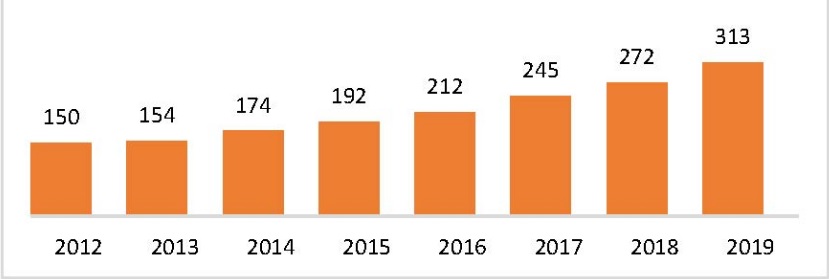Iran H-index in the World
The h-index is based on a list of publications ranked in descending order by the Times Cited. The value of h is equal to the number of papers (N) in the list that have N or more citations. This metric is useful because it discounts the disproportionate weight of highly cited papers or papers that have not yet been cited.
Advantages: The h-index reflects not just the number of papers, or the number of citations; it has some indication of the number of well-cited papers. This provides an interesting complement to other performance metrics, since it is not influenced by a single highly-cited paper.
Disadvantages: The h-index, like any other citation-based metric, is dependent on the subject area considered, as well on as the time since publication of important works. The h-index in the Citation Report reflects citations as of the most recent database update, so it could vary upon subsequent analyses.
Calculating: A researcher (or a set of papers) has an h-index of N if he/she has published N papers that have N or more citations each. The h-index is based on Times Cited data from the database. It will not include citations from non-indexed resources. The h-index is based on the depth of the user's subscription and the selected timespan, in that certain items may not be retrieved based on those parameters. Any record that is retrieved will include all of the Times Cited for the article, whether or not the user has a subscription to all of the citing articles.
Factors to consider: As with all metrics based on citation, h-index will vary by such factors as: time, subject area, and the number of papers. Users should be careful to make appropriate comparisons such as comparing h-indexes within similar types of searches and/or similar subject areas.
Find benchmark h-indices: Because the h-index can be determined for any population of articles, it is difficult to provide overall benchmarks for the value of the h-index. Very productive researchers in subject areas with high volumes of publication and citation can show h-index values over 100 at the peak of their scientific careers. Newer researchers in smaller subject areas can have h-indexes under 10.
Iran’s H-index in recent years on ESI International Database is shown in the table below. As can be seen, the H-index has had an upward trend every year. According to the statistics extracted from ESI, Iran H-index in 2012 was equal to 150, which increased to 245 in 2017 and 272 in 2018, and finally in 2019, doubling compared to 6 years. It has already reached 313.

